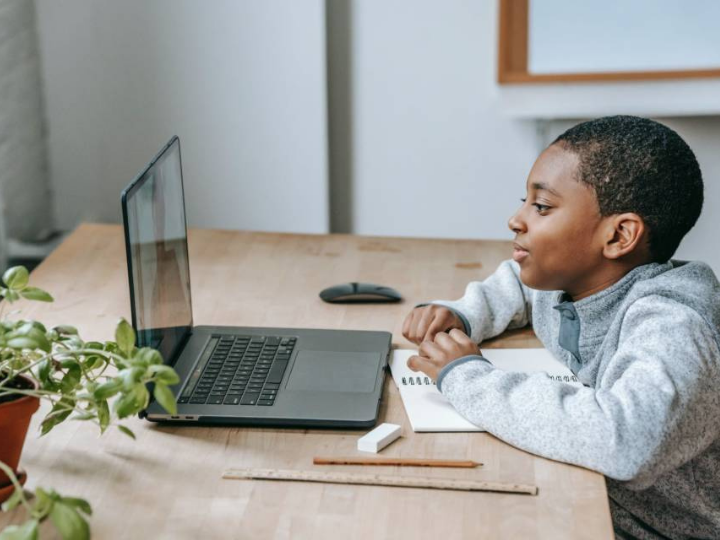by Anir Chowdhury*
Raju is a sixth-grade student. He is attentive and attends all his classes regularly. He is very good at maths, average at geography and not so good at English.
Under the traditional in-person education system, Raju receives three hours of lessons per week in all three subjects. This may be slight overkill for him for maths, just enough for geography, and completely inadequate for English.
Now imagine the availability of lessons outside of the classroom – digitally – as triggered by COVID-19.
He has the chance to no longer lag behind in English, and become a better student overall. He has more control over his learning process.
This example is a clear indication of the power of supplementing a traditional one-size-fits-all in-class educational approach with technologically enabled virtual means of learning: blended learning.
What was almost purely in-person in 2019 became pretty much wholly digital in 2020. Both have their advantages: in-person interaction is critical for social-emotional learning, interaction, collaboration and team building; digital, in turn, is highly effective for personalized, self-paced, project-based and formative-assessment-driven education.
We have been exposed to the two ends of the spectrum and have learnt the strengths and weaknesses of each of these at scale. So now we must take the best of both worlds and blend them to move the needle to somewhere in the middle of the spectrum.
Five key elements constitute a solid blended-learning framework, and they can be seen in the image above. To better get to grips with them, we can ask these five questions:
1. What is the base philosophy?
Everything comes back to providing learners with skills integral to the new normal, using a mixture of synchronous and asynchronous methods.
With synchronous learning, participants can receive immediate feedback. With asynchronous learning, participants can learn at their own pace. It follows that in-person and digital learning contribute in different ways to both. And with the right strategy, efficient communication and collaboration can be had in both environments.
To be ready to take advantage of the Fourth Industrial Revolution, which is already underway, leaders of the future need to learn the skills necessary and to do so today.
When successfully followed, a blended learning philosophy creates critical thinkers and creative problem solvers. One of blended learning’s key values is also the mental health and social well-being of both teachers and learners.
2. What are we going to learn with?
A base philosophy is all well and good, but means nothing in the absence of resources.
Access is, and will remain, the primary issue. The internet cannot be the only option if Education 4.0 is going to reach the most vulnerable communities.
Where the internet is used though, content must be accessible; digital resources cannot be behind paywalls for students.
Digital education must be affordable, reusable, interactive and personalized. More open educational resources (OER) are the way to go, as they bridge the gap between privileged students who have access to all required resources and those from vulnerable communities who lack the means.
Bangladesh’s online “edutainment” portal for students, Konnect, is a great example. Run by the government with support from a2i, it is helping some 300,000 Bangladeshi teenagers and adolescents use 30,000 pieces of content to learn 21st-century life skills.
3. How do we know that students have learned?
Educating without knowing if the students have learnt anything is an exercise in futility.
We must assess, yes, but change the way in which we have been doing so to date.
Traditionally, assessment has been a one-size-fits-all system. Instead we need to consider areas such as: the student’s willingness to learn, her desire to use knowledge practically, her intent to communicate and collaborate with peers, and her ingenuity in thinking and applying this knowledge to problem-solving.
Admittedly, it is difficult to measure these aspects of education. But a way must be found because these parameters are precisely the 21st-century skills required.
The traditional assessment method also fails to see students as individuals. It is founded on bad habits such as rote learning and regurgitation in summative exams. We must replace it with an assessment methodology that is real-time, performance-based and formative.
4. How do we ensure we have the right teachers and educators?
An often-overlooked component are the teachers themselves; traditional assessment fails teachers as much as students, by stunting their creativity and growth.
Just as students require personalised content and assessment, so too do teachers with regards to their training and capacity-development. How is a student to be equipped with the necessary skills if the teacher tasked with doing so is not empowered with the same?
Collaboration, peer-learning and critical thinking are skills that teachers need. And special attention must be paid to the ability of each teacher to follow a blended digital-physical pedagogy.
The Teacher’s Portal, developed by a2i with guidance from the Ministry of Education and Ministry of Primary and Mass Education, is Bangladesh’s answer to creating a space for teachers that focuses on capacity development for the future. Some 558,000 registered teachers created over 416,000 pieces of digital content for it.
It is both exciting and a sign of a paradigm shift towards the future that the Teacher’s Portal inculcates the important skills of collaboration, peer-learning, critical thinking and digital-physical blending.
5. How do we ensure access?
Imagine a city that has wonderful homes, fantastic restaurants and plenty of recreational spaces. However, most of its roads are terrible with the exception of a few toll roads for those who can afford them. This analogy crudely describes the stark digital divide inherent to education today, and COVID-19 revealed it.
In reimagining the digital component of infrastructure for blended education, inclusivity must be the guiding principle. We can no longer watch on as children from certain communities are deprived of education. Nor can we tolerate children being priced out of a quality education.
The tens of thousands of smart classrooms (known as "multimedia classrooms") that have been established in Bangladesh with reliable, high-speed internet provide a glimpse of what can be done.
Connecting schools is the first step, followed by connecting learners’ homes. After all, it is here that they continue the task of learning and collaborating with other learners online.
We must not overlook the needs of learners with disabilities either. They require special provisions regarding internet infrastructure, both in schools and homes.
‘Inclusive by design’ must be the motto of our digital-physical educational infrastructure.
Building forward better
There has been too much chatter about “building back better” in the aftermath of COVID.
Why not, instead, make a commitment to take the best of both the digital and the physical worlds and "build forward better", creating a paradigm that is learner-centric, personalised, equitable and inclusive?
*Policy Adviser, Access to Information (a2i), Bangladesh Government
**first published in: www.weforum.org




 By: N. Peter Kramer
By: N. Peter Kramer
